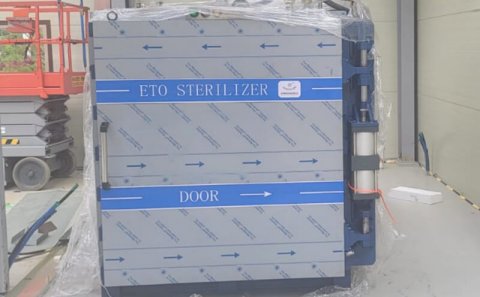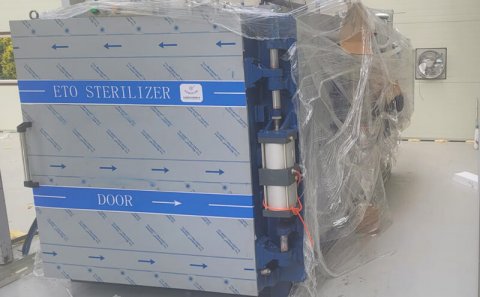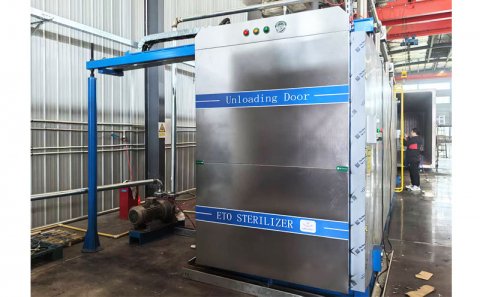Sterilization mechanism of ethylene oxide
Ethylene oxide can effectively kill all kinds of microorganisms. The main mechanism of its sterilization is that EO can react with carboxyl (- COOH), amino (- NH3), hydroxy (- OH) on protein, which makes protein inactive and leads to microbial death.
During sterilization, the temperature and humidity requirements are very important. When the temperature is lower than 35 ℃ or the relative humidity is lower than 25%, the sterilization effect cannot be achieved, even if the sterilization time is extended, it will not be effective.
Sterilization cycle and sterilization action time
Sterilization cycle: the whole process of sterilization. It includes a series of steps, such as pretreatment, vacuumizing, adding EO, EO action process, air change, etc.
Sterilization time: the time from the end of EO addition to the time before air change.
Ethylene oxide is an organic compound, chemical formula is C2H4O, is a toxic carcinogen, used to make fungicides. Ethylene oxide is inflammable and explosive, which is not easy to transport for long distance, so it has strong regional characteristics. It is widely used in washing, pharmaceutical, printing and dyeing industries. It can be used as the starting agent of detergent in chemical industry.
Ethylene oxide (EO) is a highly effective gas sterilizing agent, which has been widely used in the sterilization of heat and humidity sensitive medical devices since 1950s. Its liquid state and gas state have sterilization effect, but gas state is more effective, so its gas state is often used as sterilization medium in practice. The powerful sterilization effect of ethylene oxide is mainly through its non-specific alkylation with proteins, DNA / RNA and other genetic materials in microorganisms, which leads to the denaturation of proteins and genetic materials, and eventually leads to microbial metabolism blocked and death. When ethylene oxide is hydrolyzed, it can also be converted into glycol. Glycol also has a certain bactericidal effect.
After the ethylene oxide gas is discharged into the atmosphere, the local concentration at the outlet is similar to the sterilization concentration. However, due to the huge external space and the small molecular size of ethylene oxide, the concentration will be diluted to a safe level. And under the action of water vapor and sunlight in the air, it will decompose into glycol, which will eventually decompose into carbon dioxide and water. The end products are not harmful to environmental protection.
Jun 17, 2025
view: 1597
Storage of ethylene oxide 1 ethylene oxide shall be stored in a separate room. The room shall be equipped with ventilation, explosion-proof and fire-fighting facilities. 2 the ethylene oxide cylinder shall be stored in a cool place away fro...
Read More
Jul 15, 2024
view: 1996
Touch operation of the eo sterilizer 1. Adjust voice volume proper, to operate according to the voice prompt. 2. If its the first time to use the control system, or need to change the parameter, please click User Parameters button. According to steri...
Read More










